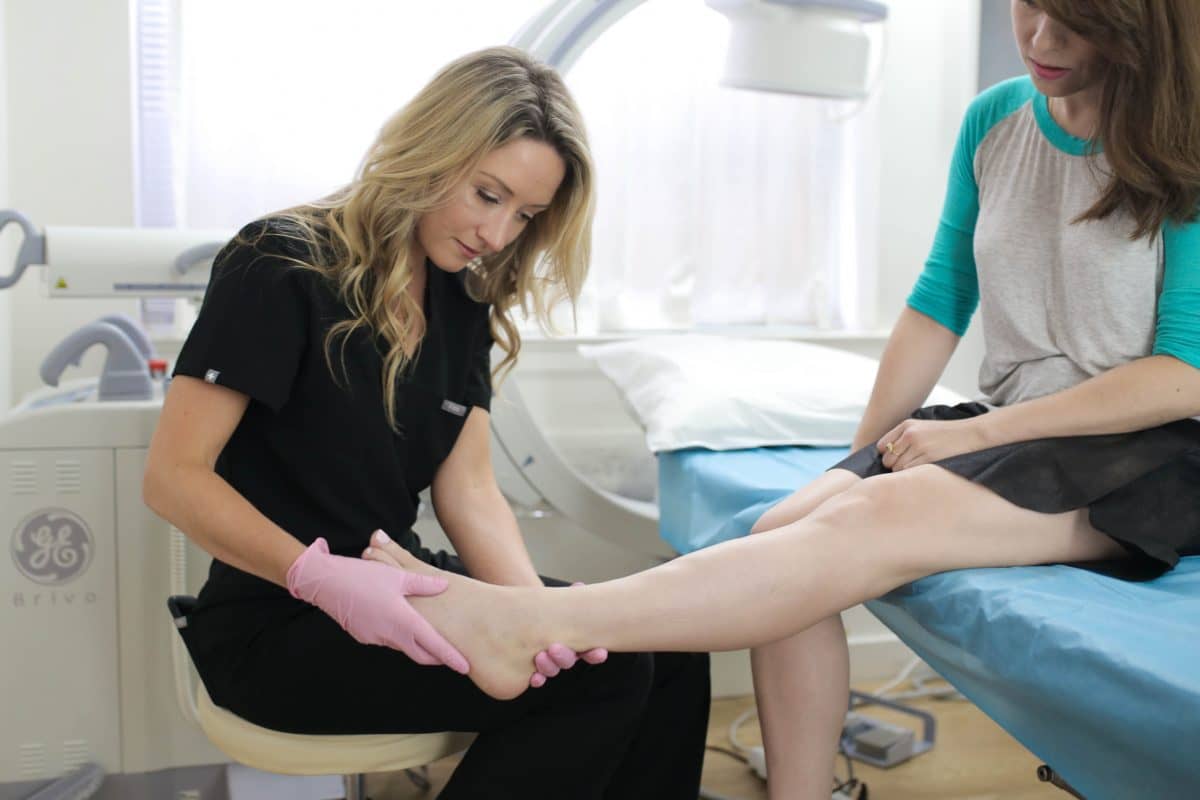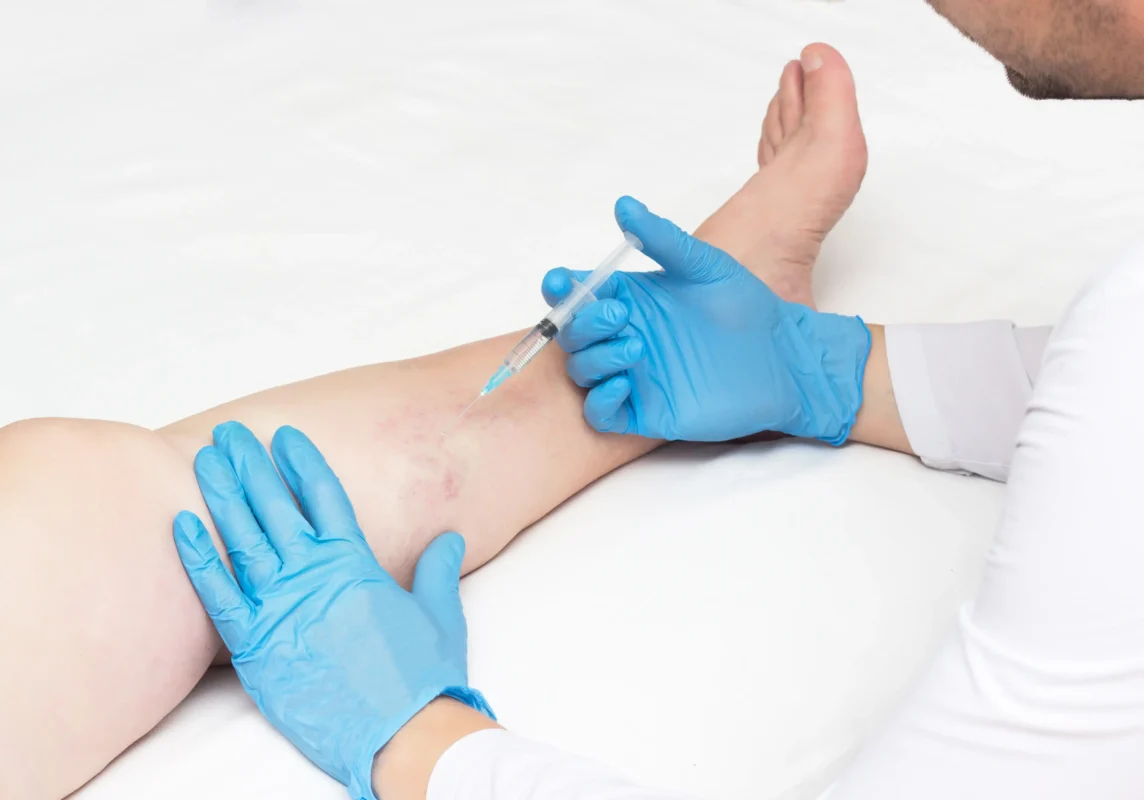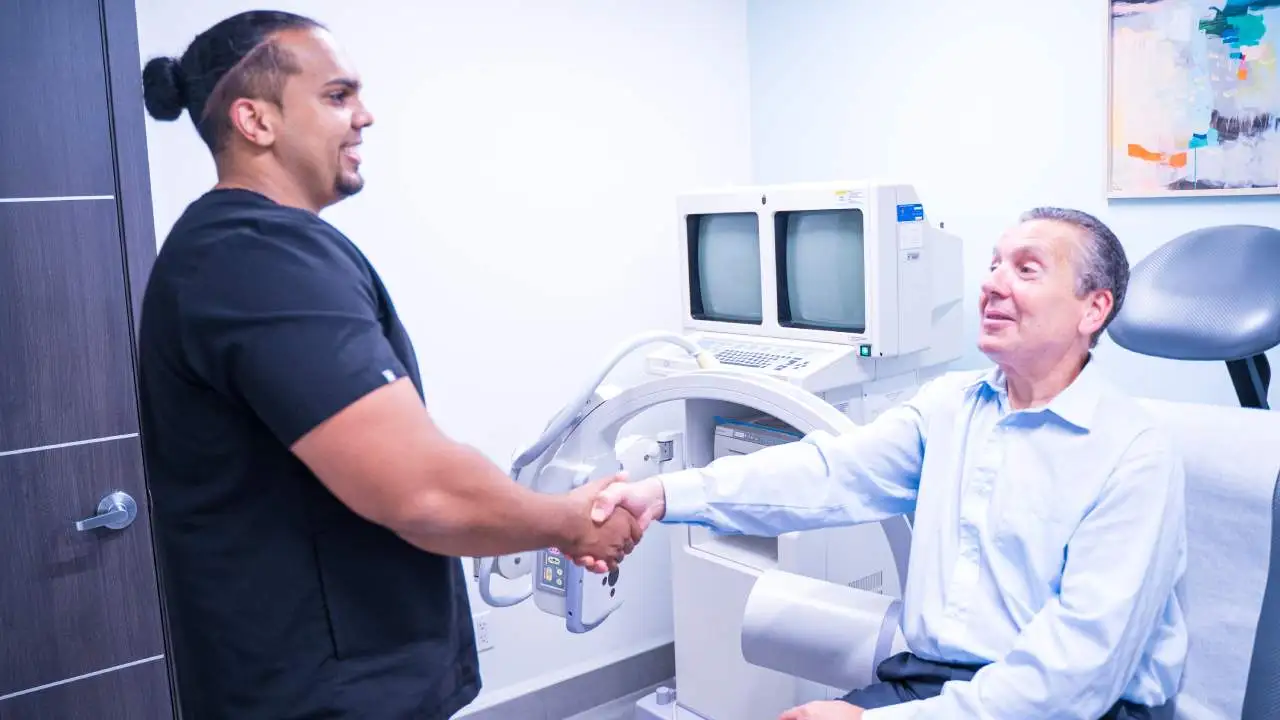Can Venous Insufficiency Be Cured?
Varicose veins and spider veins are more than a simple cosmetic concern. They can be a sign of a serious disease called venous insufficiency. If left untreated, symptoms can progress from unsightly varicose veins to swelling, skin ulcerations, and chronic pain. If you are wondering “Can venous insufficiency be cured?” the answer is yes. There are a variety of effective, non-invasive treatments to remove unhealthy veins from circulation, so that healthy veins take over your blood flow. A specialized vein doctor in NJ or vein doctor in NYC will examine your medical history and your current symptoms to ensure an accurate diagnosis and a successful treatment plan.
What Is Venous Insufficiency?
Your veins are responsible for moving blood from your extremities to your heart, so that your heart can push it to the lungs for oxygenation. When it comes to the blood in your lower half, veins must work against gravity to get blood where it needs to go. This is accomplished through a series of one-way valves that open to allow blood to pass through, then close to prevent backflow. When disease damages the valves, blood leaks through. This condition is referred to as venous insufficiency.

What Symptoms Does Venous Insufficiency Cause?
One of the most obvious signs of chronic venous insufficiency is varicose veins and spider veins. Varicose veins occur when blood starts to pool in the lower half of your body, because your veins aren’t moving it to your heart efficiently. The blood pressure in your veins goes up, weakening the walls of the vessels. They become engorged and swollen. What you will see is thick, knotted veins that protrude against the surface of your skin. While they are often painless at first, many patients eventually notice discomfort.
Spider veins are similar to varicose veins in terms of how they develop, but their appearance is somewhat different. Spider veins are named for their resemblance to a web or net, which appears close to your skin’s surface. They may be red, blue, or purple, and they may occur in addition to or instead of varicose veins if you have venous insufficiency.

Other signs of venous insufficiency range from very mild discomfort to severe pain. Patients report cramping in their legs, especially at night, and they often suffer from restless leg syndrome. Swelling in the legs and ankles is common, and so is weakness, throbbing, itching, or a feeling of heaviness in the legs. You may notice the skin on your ankles and legs growing thicker and becoming discolored, and in serious cases, you may experience leg ulcers. These sorts of symptoms should prompt you to see a vein specialist to determine can venous insufficiency be cured in your case.
What Are Risk Factors for Venous Insufficiency?
Varicose veins and venous insufficiency impact more than 50 percent of Americans at some point during their lives, and women tend to develop this condition more frequently than men. Some of the risk factors for the disease include pregnancy and menopause, and venous insufficiency tends to strike more frequently after the age of 50. A family history of venous insufficiency puts you at risk for the condition, as does a history of cancer, blood clots, or trauma to your legs. In terms of lifestyle factors, smoking, obesity, and inactivity can contribute to your level of risk.
How Can Venous Insufficiency Be Cured?
The best way to manage venous insufficiency is to close diseased veins and re-reroute blood to healthy veins. This improves your circulation and reduces or eliminates the symptoms you are experiencing. Once upon a time, the only way to treat varicose veins was through invasive vein stripping surgery, but today’s treatments are vastly superior.
Advances in medical techniques have produced a variety of minimally-invasive treatment options that can be performed in a non-surgical setting by your vein doctor New Jersey or vein doctor New York. Most of these methods are covered by standard health insurance plans, and they are completed in just 15 – 30 minutes. The top five treatments for venous insufficiency include the following:
- Conservative Therapy (weight loss, exercise, compression stockings) – These techniques may successfully reduce the appearance and discomfort of varicose veins, however they are unlikely to address the underlying disease.
- Radio Frequency Ablation – Commonly referred to as RFA, this method relies on heat to close unhealthy veins so blood can be rerouted.
- Sclerotherapy – This treatment relies on a medical injection to block the diseased veins, so that blood is forced to find a path through healthy veins.
- Endovenous Laser Therapy – Lasers offer a highly effective method of closing unhealthy veins. Patients who receive this treatment enjoy a long-term success rate of 97 percent.
- Venaseal (vein glue) – This procedure is one of the newest venous insufficiency treatments. It works through the use of special sealant to prevent blood from moving through diseased veins.
Many patients are under the impression that even after one of these treatments, their varicose veins will return. In terms of can venous insufficiency be cured, they believe that their relief is only temporary. However, this is a myth. When vein stripping surgery was the standard solution, it was common for the problem to reoccur. Today’s treatments are much more effective. When you work with a specialized vein doctor, recurrence rates can be as low as five percent.
Learn more about the treatment options that are right for you by visiting the Vein Treatment Center, a proud member of VIP Medical Group. You will be examined by a highly-qualified, board-certified vein doctor who has the experience and expertise required to provide you with an accurate diagnosis. The Vein Treatment Center physicians are familiar with state-of-the-art methods of treating venous insufficiency, and you can expect a customized treatment plan that meets the unique needs of your situation.
Frequently asked questions
Can chronic venous insufficiency heal itself?
No, it doesn’t go away on its own. This condition means your leg veins aren’t working quite right, and over time, that can get worse. The good news is, we can treat it, safely and gently.
Can walking cure venous insufficiency?
Walking is great for your circulation, and it can definitely help your legs feel better. But it won’t fix the problem completely. Think of it like brushing your teeth: it’s part of the routine, but you still need the dentist when something’s wrong.
What are the best treatments for vein disorders?
We use simple, low-risk treatments that help close or shrink the veins that aren’t working well. These include:
- A small injection (sclerotherapy)
- A gentle heat treatment to close the vein (ablation)
- A special foam (Varithena) that targets larger veins
These are outpatient treatments, meaning you go home the same day.
Can chronic venous insufficiency affect your life expectancy?
Not directly, no. But if you ignore it, it can cause painful problems like swelling, wounds, or clots. That’s why it’s important to catch it early. With the right care, you can stay active and avoid complications.
Why is chronic venous insufficiency in the spotlight right now?
Chronic venous insufficiency has been getting more attention lately after reports about Trump’s vein condition. Some news sources shared that Donald Trump was diagnosed with CVI, a condition that can cause leg swelling and circulation problems. That coverage has helped raise awareness and made more people curious about their own symptoms. It’s a reminder that leg discomfort isn’t just part of getting older. It’s something worth checking out.








